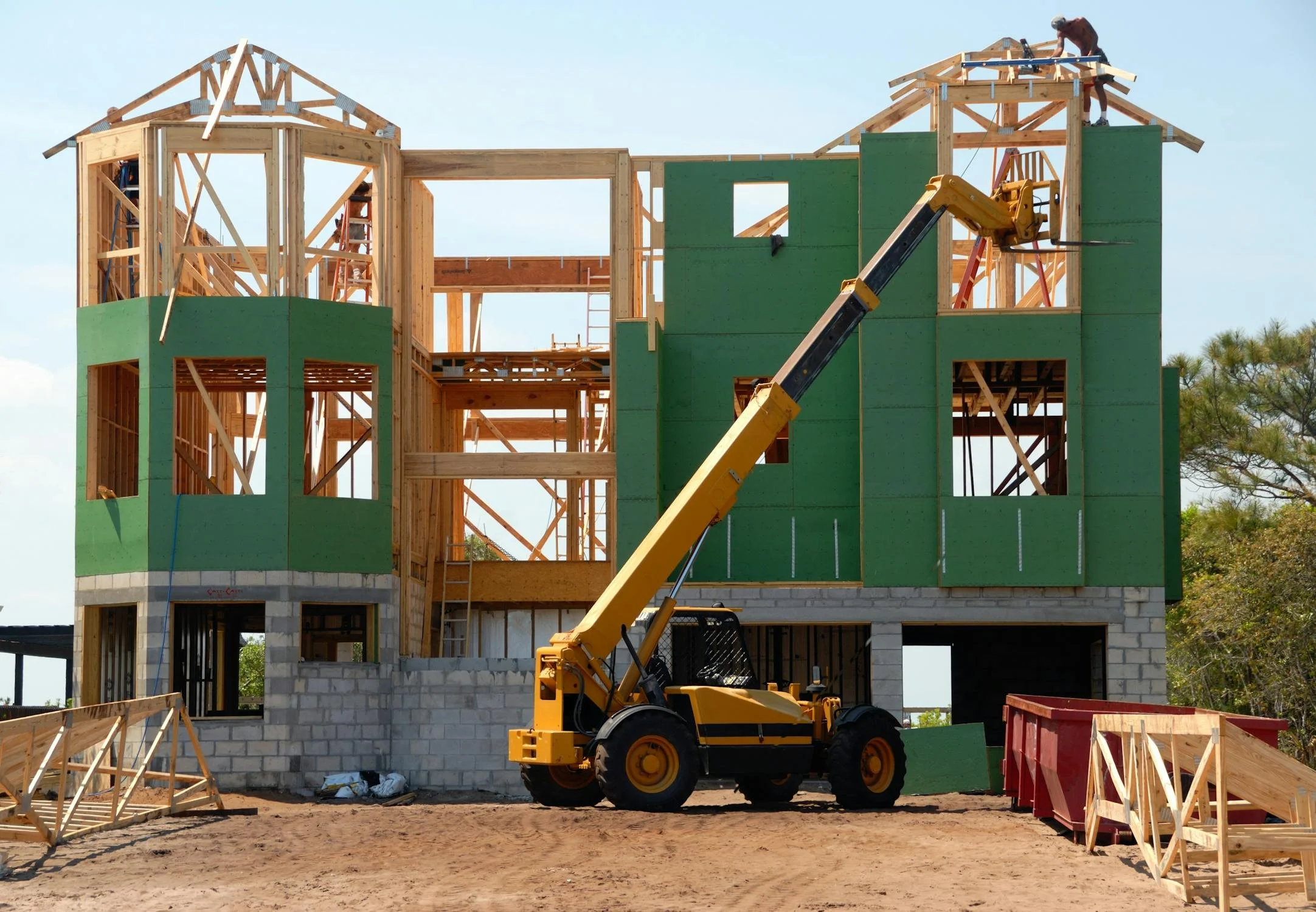
The construction industry is transforming with the rise of green building materials, especially those made from recycled sources. This shift promotes sustainability while enhancing creativity and efficiency in design. Recycled materials like plastic, wood, metal, and glass are finding new life in construction, from homes to public spaces. Here’s a quick overview of the seven key materials we’ll explore:
- Recycled Plastic: Durable and versatile for various applications.
- Reclaimed Wood: Adds character and reduces deforestation.
- Recycled Metal: An energy-efficient alternative to new metals.
- Recycled Glass: Unique aesthetic and functional properties.
- Recycled Rubber: Offers resilience and shock absorption.
- Paper-Based Products: Strong, with excellent insulation.
- Textile Waste: Ideal for insulation and acoustic treatments.
The Rise of Green Building Materials
Green building materials focus on sustainability throughout their lifecycle. As highlighted in “The Rise of Green Buildings: What You Need to Know” these materials are revolutionizing construction by reducing waste, offering unique aesthetics, and minimizing environmental impact.
The Environmental Impact of Traditional Construction
To truly appreciate the value of recycled green building materials, it’s crucial to understand the environmental toll of conventional construction practices. The building sector is responsible for a substantial portion of global carbon emissions, with the production of cement alone accounting for about 8% of worldwide CO2 emissions. Moreover, traditional construction is a major consumer of raw materials and energy, contributing to resource depletion and habitat destruction. Additionally, many older buildings contain hazardous materials like asbestos, which pose significant health risks and require specialized asbestos removal Vancouver companies safely eliminate.
Benefits of Using Recycled Materials in Building
- Reduced Waste: Diverts materials from landfills.
- Lower Carbon Footprint: Less energy required for processing.
- Resource Conservation: Decreases the need for new raw materials.
- Improved Air and Water Quality: Fewer toxins are emitted during production.
- Economic Advantages: Advancements in recycling make these materials increasingly cost-competitive with traditional options.
By embracing these innovative materials, we can build a more sustainable future.
Recycled Green Building Materials Overview
Recycled Plastic: Transforming Waste into Durable Materials
Recycled plastic, such as HDPE, PET, and PVC, is used in construction for products like plastic lumber, insulation, roofing tiles, and even in road construction. It offers durability and low maintenance but faces challenges like structural integrity and recycling complexity.
Reclaimed Wood: Breathing New Life into Old Timber
Reclaimed wood, sourced from old buildings, ships, and even barrels, is durable, has a unique aesthetic, and reduces the need for new logging. It’s widely used for beams, flooring, furniture, and decorative accents, making it a sustainable choice for many projects. Demolition Company Vancouver often supplies reclaimed wood from local building projects, making it an excellent resource for architects and builders looking to incorporate sustainable materials into their designs.
Recycled Metal: Forging a Sustainable Future
Common recycled metals include steel, aluminum, and copper. These materials can be reused without losing their properties, saving energy and reducing mining impact. They are used in structural frameworks, roofing, and decorative elements, contributing significantly to sustainable construction.
Glass Recycling: Shattering Expectations
Recycled glass is turned into construction materials through processes like crushing and melting. It is used in countertops, insulation, and decorative tiles, offering durability, versatility, and low maintenance. Its unique properties make it ideal for innovative architectural applications.
Recycled Rubber: Versatile and Durable
Discarded tires are transformed into valuable building materials through shredding and granulation. Recycled rubber is used in flooring, roofing, road construction, and landscaping, offering shock absorption, sound insulation, and weather resistance.
Paper-Based Products: Surprising Strength and Insulation
Recycled paper is processed into construction materials like cellulose insulation and compressed panels. It provides excellent thermal and acoustic insulation, is lightweight yet strong, and is treated for fire resistance and moisture regulation, making it a practical green building material.
Sustainable Applications in Interior and Exterior Design
Recycled Paper in Construction
Recycled paper has diverse applications:
- Insulation: Blown-in cellulose for walls and attics.
- Wall Panels: Compressed paper panels for partitions.
- Roof Underlayment: A sustainable alternative to traditional roofing materials.
- Decorative Elements: Used in moldings and architectural details.
Textile Waste: Weaving Sustainability into Construction
Types of Recycled Textiles in Green Building
Textile waste such as cotton, denim, synthetic fibers, and natural fibers like wool and jute are repurposed into construction materials. They are processed into fibers or compressed boards for use in building projects.
Insulation and Acoustic Properties
Recycled textiles provide:
- Thermal Insulation: Comparable to traditional fiberglass.
- Sound Absorption: Reduces echo and noise.
- Moisture Management: Helps regulate humidity levels.
Innovative Applications in Architecture
Recycled textiles are used for:
- Insulation: In walls, ceilings, and under floors.
- Acoustic Panels: Decorative and sound-absorbing.
- Carpet Underlay: Adds cushioning and insulation.
- Composite Materials: Mixed with resins for durable boards and panels.
The Future of Green Building Materials: Trends and Innovations
Emerging Technologies in Recycled Material Processing
The field of green building materials is rapidly advancing with new technologies:
- Advanced Sorting Techniques: AI and machine learning improve waste sorting efficiency.
- Chemical Recycling: Breaks down materials to their core components.
- 3D Printing: Uses recycled materials for construction.
These innovations enhance the quality and range of recycled materials available.
Biomimicry and Nature-Inspired Materials
Researchers are creating sustainable materials inspired by nature:
- Self-Healing Concrete: Uses bacteria to repair cracks.
- Bio-Based Plastics: Made from renewable, biodegradable resources.
- Mycelium Composites: Lightweight, insulating materials from fungi.
These materials represent cutting-edge sustainable construction.
AI in Sustainable Material Development
AI is revolutionizing the development of green building materials:
- Material Optimization: Designs materials with specific properties.
- Predictive Maintenance: Anticipates repair or replacement needs.
- Supply Chain Management: Streamlines the distribution of recycled materials.
As AI advances, its role in sustainable construction will expand.
Implementing Green Building Materials: Challenges and Solutions
Overcoming Regulatory Hurdles
Regulatory frameworks often lag behind technological advancements. Updating building codes, developing standardized testing, and addressing liability concerns are crucial for the adoption of innovative materials.
Educating Stakeholders
Lack of awareness is a barrier to using green building materials. Educational campaigns, training programs, and consumer education can promote the benefits and long-term value of these materials.
Cost Considerations and Economic Benefits
While initial costs may be higher, recycled materials offer long-term savings through durability and lower maintenance. Incentives and subsidies also make these materials more competitive. Supporting the recycling industry can create jobs and stimulate local economies.
Conclusion
Recycled green building materials are transforming construction, offering sustainable alternatives to traditional methods. Despite challenges, their long-term benefits in reducing environmental impact and conserving resources are clear. Embracing these innovations can create a more sustainable future for the built environment.







